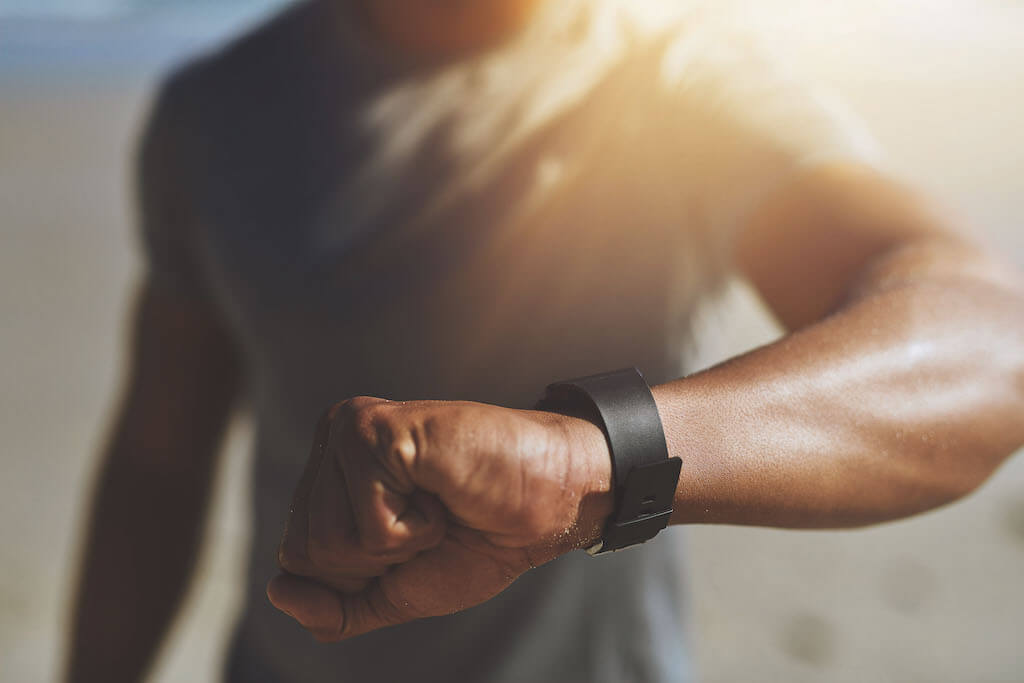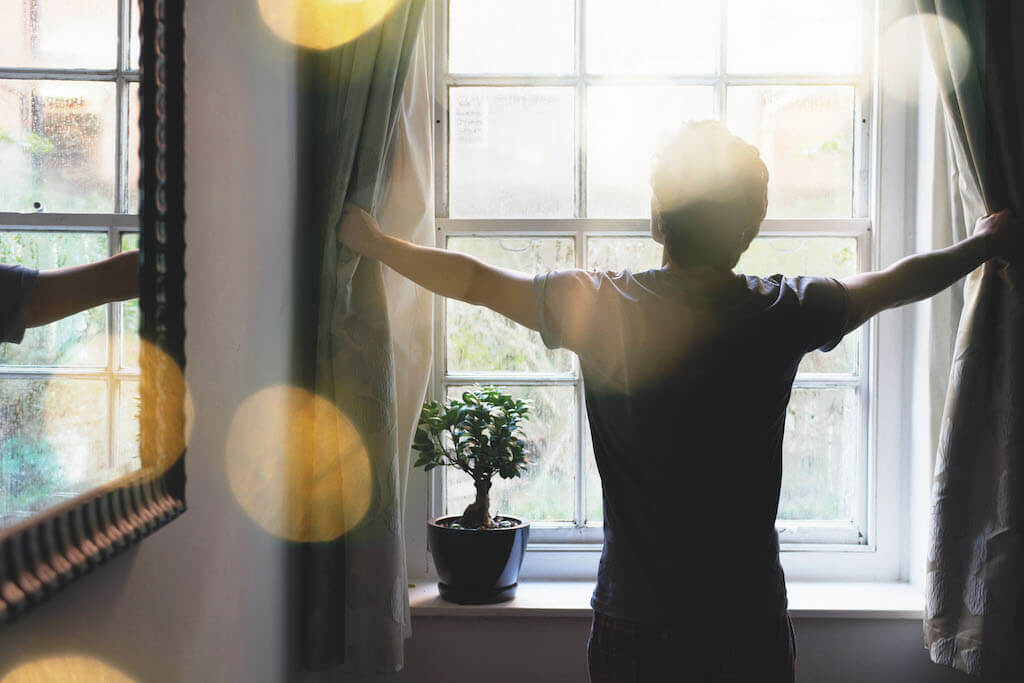We all instinctively know whether we’re an owl or a lark: whether we jump out of bed with ease, or groggily hit snooze for the third time. It’s known as our ‘chronotype’, and understanding it can have a profound impact, with research showing that performance variations can be as pronounced as 26 per cent over the course of a day.
“Your chronobiology is mostly genetic,” says Dr Mark Homer, senior lecturer in sport science and sport performance at Buckinghamshire New University. “The two extremes are a lark or an owl, and we all fall somewhere on that spectrum.”
But during summer, when long, bright days mean all options are open, should we stick with what feels natural, or be taking advantage of the light at either end of the day?
Best time to work out
“You’ll never post a PB at 7am,” says Dr Homer. “The best time to perform for all of us is mid-afternoon, when our systems – responsive heart rate, blood pressure and body temperature – are all peaking.”
Brendon Gabriel, a research fellow in cardiovascular and diabetes science at The Rowett Institute, University of Aberdeen, agrees, and adds that it has an even more pronounced impact outside of endurance exercise.
“Resistance and high-intensity exercise are the most susceptible to diurnal rhythms,” he explains. “Daytime peak force is nearly always demonstrated as being highest between 4pm and 8pm, and lowest between 6am and 10am, with a difference of approximately eight per cent.” It’s why, he says, most sporting world records are set later in the day.

If possible, slow-and-steady workouts are best saved for early mornings, while strength tends to peak between 3-6pm
Good afternoon
The reasons we’re firing on all cylinders mid-afternoon are complex. “Our circadian rhythms are maintained partly by a region of the brain called the suprachiasmatic nucleus (SCN),” explains Gabriel, “which helps regulate hormones like melatonin which, in turn, regulate the sleep/wake cycle.
“Our cells – including muscle cells – also have molecular ‘clocks’, which can maintain a 24-hour cycle, even when removed from the body. Together, these systems maintain our physiological circadian rhythm and may also interact with the time of day we exercise.”
Then there’s the fact that our core body and skeletal muscle temperature peak later in the day.
“Generally, a warmer body and muscles results in higher strength and power capacity,” says Gabriel. Finally, he points to the hormonal rhythms of cortisol, adrenaline and melatonin, which may all influence our response to exercise at different times of the day.
Add to that the simple fact that if you’ve just woken up you’re stiffer, your range of movement is reduced and any workout will feel harder. “You won’t be able to lift as much, and you have the risk of injury when you train with cold muscles and joints that haven’t been fuelled,” says Dr Homer.
That’s supported by work from the University of Texas, which found somewhere between 3pm and 6pm to be optimum for physical performance and cutting risk of injury. The researchers found that muscle strength peaked between 2pm and 6pm by as much as six per cent, while joints and muscles were 20 per cent more flexible. From a cardiovascular perspective, a study of almost 5,000 people in New York found that lungs function 17.6 per cent more efficiently at 5pm compared with at midday.
Fuel in the tank
For years we’ve thought exercising early is the best option for fat burning, but recent science casts some doubts. For example, it’s been found that morning exercise increases the ability of muscle cells to metabolise sugar and fat, whereas working out later keeps that energy expenditure going for hours after exercise. Dr Homer thinks there’s a simple explanation to the fat-burning question:
“I’m not convinced that the difference in our fuel usage is due to the time of the day, or just our eating habits,” he says. “If you’re training early in the morning, the chances of you having had a decent meal are much lower; if you’ve eaten at 7pm the night before, then you’ve fasted overnight, your fuel availability will be very different to if you go for a bike ride or lift weights in the mid-afternoon.”
Research that looked at both mice and humans found that exercise performance was substantially better – about 50 per cent on average – in the evening compared with the morning. Interestingly, after evening workouts mice also had higher levels of a metabolite called ZMP – a compound that some athletes use for doping. People in the study had lower oxygen consumption while exercising in the evening compared with the morning, too, making exercise more efficient.
Everything points to the afternoon as our golden time, but many of us can’t clock off in the middle of a workday, so the question is: should we follow our more natural rhythms, or challenge them?
The evidence suggests tuning in to our personal preference and going with it. In a small study, 20 athletes performed an endurance test at six different times of the day: larks performed best in the earlier tests; owls peaked in the evening. Larks saw a seven per cent variation in their performance over the course of the day; for late types it was up to 26 per cent.
The researchers agreed that the biggest factor in predicting performance was how long an athlete exercises after they would naturally wake up. Another study of 375 adults found that the greatest indicator of whether they kept up their exercise regime was timing workouts consistently, suggesting that if we exercise when it suits us and our bodies, we’re more likely to stick with it.
If you’re forced to set the alarm for stupid o’clock, or the only time you can lift weights is pre-work, adjust your expectations.
“Set realistic targets for the time of day,” says Dr Homer. “I know what my morning times and morning heart rates are, so my expectations are reduced if I go out at 6:30am, compared with if I go out at 4pm.”
He continues that there are various ways you can do that for cardio sessions: “If at your peak, for example, you run a mile every eight minutes and your heart rate is 143 bpm, you’re better off running at the correct heart rate and letting the speed be whatever it is for that heart rate.
“If you don’t have a heart-rate monitor, base it on perceived levels of effort: if you want to go out for a five-out-of-ten-effort run, you’ll get the same benefit, it’s just that you’ll be a bit slower at 6am, and a little bit faster at tea time.”
That same theory applies to weights sessions: save particularly gruelling workouts for your optimum time, somewhere in that sweet spot between 3pm and 6pm. “Save your high-intensity sessions – the ones that require real motivation – for for the time when your heart rate matches your speed,” says Dr Homer. “And save your long and slow, steady sessions for early mornings.”

If you have to get up to work out early, let natural light in and get some food in you as soon as possible
Rest is best
The only time you genuinely need to go against your chronotype by choice, rather than thanks to your schedule, is if you’re gearing up for an event. “If you’re preparing for a morning race, you want to do a lot of your preparation at race time, so you’re able to perform,” says Homer.
And if you’re markedly sloth-like first thing, help your body. “Studies show what we all probably know,” adds Gabriel, “that caffeine and listening to music can help us perform better in the morning.”
Light exposure is key, too. “One study showed that a weekend of camping with exposure to mainly natural light was able to rapidly reset people’s chronotypes,” says Gabriel. “Most people will eventually adjust, and may even find their chronotype has slightly shifted.”
Again, there’s a caveat: both experts agree that if forcing our chronotype is impacting our ability to sleep, that’s too big a sacrifice.
“There are all these recovery tools and tricks, from foam rollers to ice baths and compression socks,” says Dr Homer, “but if you’re not getting seven or eight hours of sleep a night, you can forget all of that stuff, because that’s when your body will do the majority of its repair. If you are exercising at either end of the day, think about how to ensure you get that consistent eight hours.”
Reassuringly, a recent (admittedly small) piece of Australian research found that 30 minutes of high-intensity exercise performed in the early evening doesn’t negatively affect subsequent sleep. Participants did six one-minute maximal intensity sprints on stationary bikes, interspersed by four-minute rests in the morning, afternoon and evening. Evening exercise didn’t negatively impact sleep, while afternoon and evening sessions reduced the hunger hormone ghrelin more than morning workouts – plus the power output during the sprint efforts was higher for the afternoon and evening trials.
If you struggle to drop off after exercising in the evening, Dr Homer suggests the usual solutions: avoiding caffeine and keeping meals light. If you’re forcing yourself up, he suggests waking up and going to bed at similar times.
“If you’re exercising early four days a week, still get up fairly early on days five, six and seven,” he advises. “Use that time to do something else, but don’t burn the candle at both ends.”Also, don’t exercise hard one evening, then set the alarm to do some more the next morning.
All things considered, mid-afternoon is the optimum time to put in a tough session. However, when that isn’t possible, tune in to your body. “Work out when you’re best, and what your responses are like when you’re not,” says Dr Homer, “because if you have to exercise at 6am but you aim for your afternoon accomplishments, you’ll soon burn out.”
As more companies embracing a flexible approach to work, you may be able to negotiate a 30-minute break at 3pm. If that’s not possible, though, train when you can, and savour the days when you get to make the most of that golden window.
Words: Laura Potter







